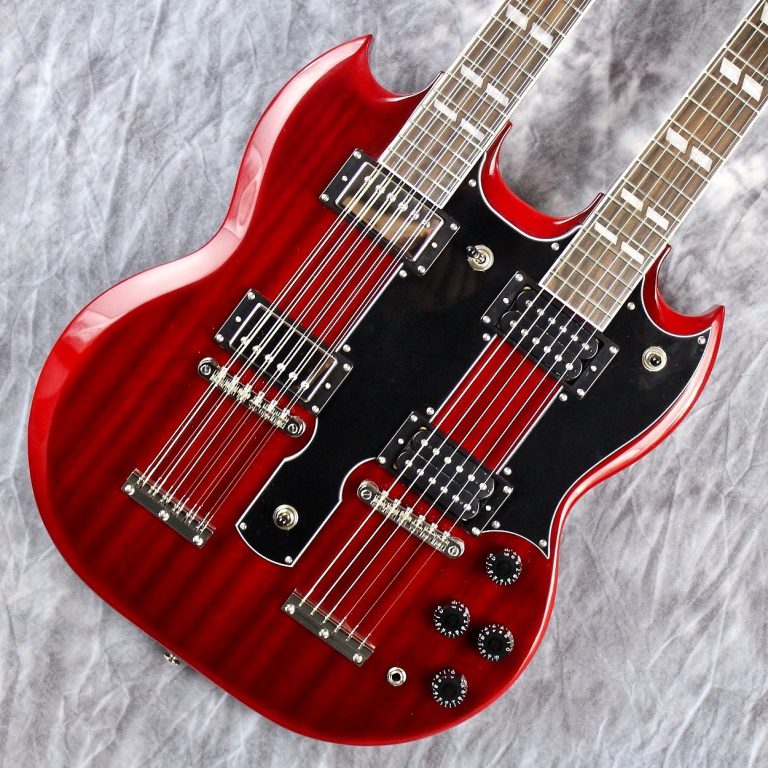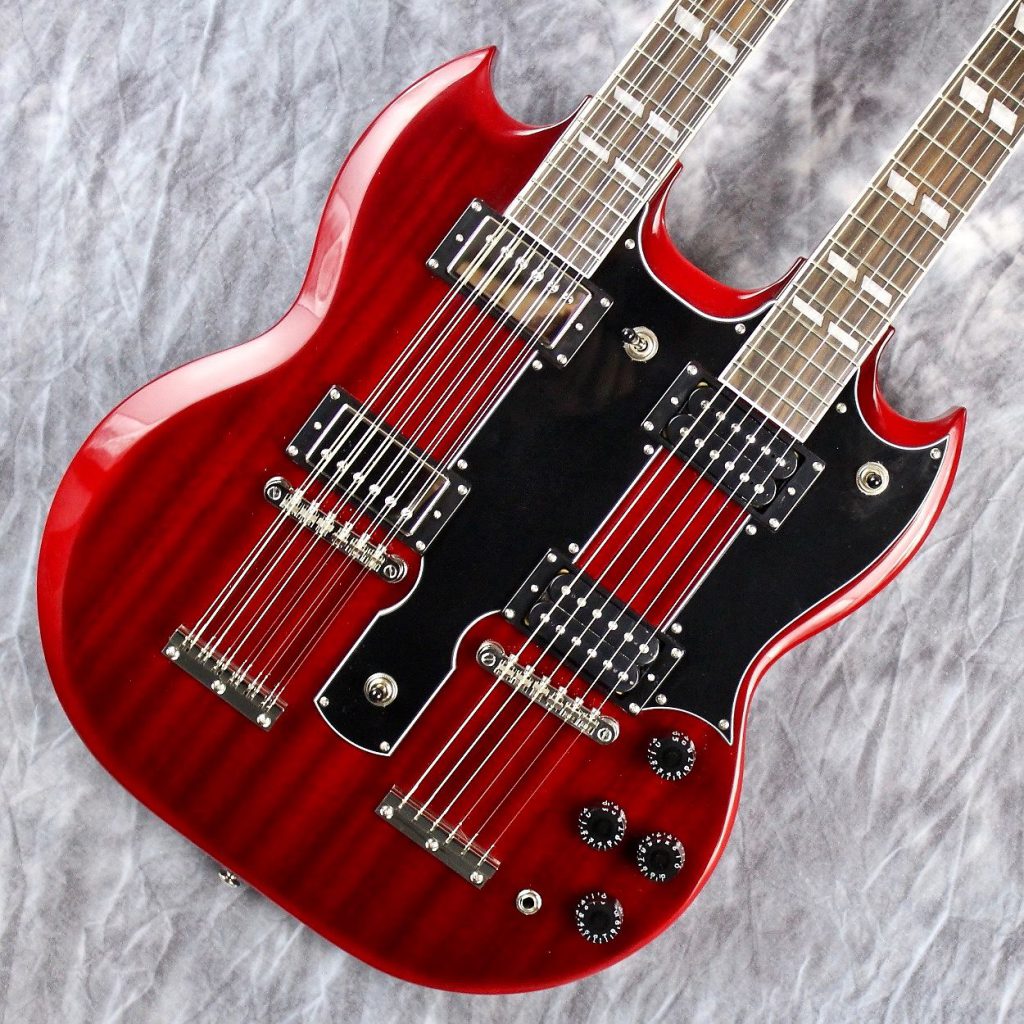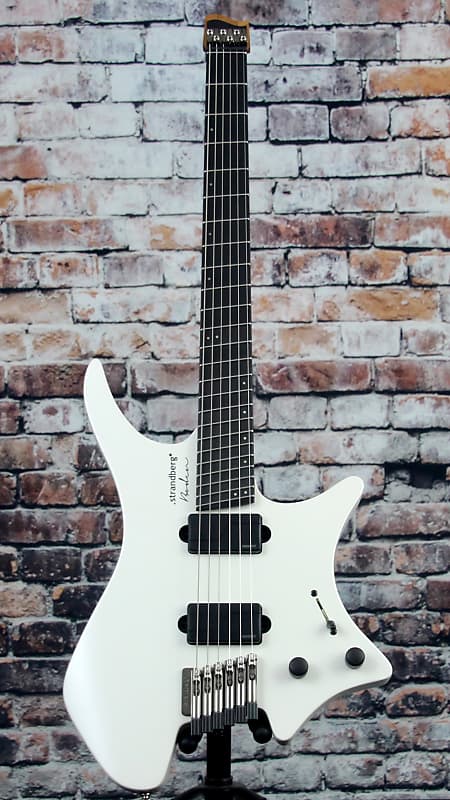Guitar River is reader-supported. We may earn a commission when you make a purchase using the links on our site.
Learn more.
What Electric Guitars Weigh And Why It Matters

Electric guitars are sold in a wide variety of shapes, sizes, and weights. The weight of an electric guitar might not seem like an important metric, but it will affect anything from how well it sustains tone to how easily it can be moved around the stage. It seems like just another tidbit to know about your guitar, but trust me, the weight matters.
What do electric guitars weigh?
The average weight of an electric guitar is roughly 8lbs. This number will change depending on the guitar’s size, materials, construction, and even the manufacturer. Here are 10 popular models and their weights:
| Manufacturer | Model | Weight |
| Gibson | Les Paul | 9-12 lbs |
| Gibson | SG | 6 lbs |
| Gibson | EDS-1275 | 13 lbs |
| Fender | Stratocaster | 7 – 8.5 lbs |
| Fender | Telecaster | 7 – 8 lbs |
| Ibanez | JEM | 7.5 – 8.5 lbs |
| PRS | Custom 24 | 9 lbs |
| Strandberg | Boden | 5 lbs |
| Rickenbacker | 330 | 8 lbs |
| Ernie Ball | Music Man | 6 lbs |
The chart above gives a glimpse into the full story. Weights will vary across manufacturers and models depending on the specific year, and any modifications that were made after purchase.
Why Does Weight Differ Between Guitars?
A Gibson Les Paul from 1970 will weigh more than a Les Paul from today because the design of the guitar has changed. Les Pauls after 1982 were made weight-relieved, meaning holes were drilled out of the body.
This method of construction reduces the weight but also changes the fundamental character of the instrument. A new Les Paul will still sound like a dream, but the reduction in its weight will not go unnoticed.
Weight is a crucial element of electric guitars because of how it reflects the instrument’s construction.
Weight of Wood Used
| Wood | Weight in kg/m3 |
| Alder | 400 – 700 |
| Basswood | 300 – 600 |
| Mahogany | 450-640 |
| Maple | 550-700 |
| Swamp Ash | 450 – 550 |
| Walnut | 650 – 700 |
There are many different types of wood used in guitar construction, but the list above showcases the most popular guitar materials by weight. The Gibson Les Paul is made from mahogany and usually maple. These two materials are fairly heavy and used to produce a fairly heavy guitar before the decision was made to utilize weight relief.
Les Pauls of today are much easier to carry around a stage than the Les Pauls of the past, and the materials didn’t even need to change. The material wood is a fundamental element to the weight and usability of the guitar, but it is clearly not the only deciding factor.
Why The Weight Of Your Guitar Matters
We already know that the weight of the instrument can mean more than how easily it can be carried. Not only does the weight signify what the internal structure of the electric guitar looks like, but it also signifies what it sounds like.
Heavy Guitars
Heavier guitars will have increased sustain compared to lighter guitars. Their tone will sound richer and will resonate for longer. This has to do with the electric guitar body’s function as a resonating device. The weight of the guitar will determine how well vibrations are able to build, and therefore how well the guitar is able to play and sound.

Electric guitar pickups are grounded in the wooden bodies and make up a small portion of the instrument’s weight. The more mass around the pickups, the fuller and richer the guitar will sound. Again, we see that weight is a crucial metric for determining something else entirely.
It’s difficult to think of a more important quality than sound-quality when it comes to instruments.
Light Guitars
While some musicians perform with heavy guitars, like Jimmy Page of Led Zeppelin (who would play the enormous double-necked Gibson EDS-375), many prefer to play with the lighter variety.
Simply put, a performer will have an easier time with a lighter instrument. Weight is a very important metric when it comes to selecting an electric guitar for a performance.
The tone of lighter guitars is affected by the weight as well. Light guitars are often “brighter” than that of their heavier counterparts. While heavy guitars will exhibit stronger sustain and a richer tone, lighter guitars will exhibit a sound that is brighter and warmer because each string is able to resonate more equally.
Weight Matters Because:
- Weight reflects the guitar’s construction.
- Weight reflects the guitar’s tonal character.
- Weight reflects the guitar’s maneuverability in a performance.
The weight of an electric guitar is clearly a key piece of information about the instrument. Most of us have trouble believing that the scale really shows anything more than a number in pounds or kilograms until we realize how much a Doctor can tell about a patient with just their weight and height.
The weight of an electric guitar is an invaluable insight into the capabilities and internals of a body that cannot simply be opened up and inspected. In picking up a guitar, we become something of doctors ourselves. The weight will tell us just about everything we needed to know that a quick glance (or outright visual inspection) could not.
What’s The Heaviest Electric Guitar?
An excellent candidate for the heaviest electric guitar is the double-necked Gibson EDS-1275. This guitar actually weighs more than two Gibson SGs put together. Ironically, the EDS-1275 is essentially two SGs put together into a larger body.

The combination of the two guitar necks on a larger, heavier body, makes for something that literally weighs more than the sum of its parts. This guitar has more strings and tuning knobs and electrical components because of its two necks (one of which has 12 strings, while the other has 6), but the bulk of the weight is held in the enormous body.
Playing the six-string neck will approximate the feel of a regular SG, which is a fairly light guitar at around 6 lbs, but the instrument will sustain like you’re playing a stringed wooden ship. The EDS-1275 is an unusual electric guitar, but it’s a perfect example of how heavy guitars work.
It will be difficult to run around a stage with one, but the sheer weight of the instrument will provide the player with unparalleled richness and depth of tone.
What’s The Lightest Electric Guitar?
The lightest “normal” electric guitar may very well be the Strandberg Boden. These instruments are made out of the bare minimum of materials and don’t even have a headstock for tuning purposes. The tuning knobs are contained under the bridge of the guitar. These instruments are made for lightness and for stealth.
The Strandberg Boden is an excellent example of an ultra-lightweight guitar that has been designed specifically to be unobtrusive and easy to use. Live performers will get a professional quality guitar that won’t tire them out between songs. You might see one in the hands of Tosin Abasi from the band, Animals as Leaders.

Another candidate for a lighter-than-air electric guitar is a practice or travel guitar. While Strandbergs feature the bare minimum in terms of materials for a professional or performance-ready instrument, practice and travel guitars often have sections drilled out or missing from the body.
These types of guitars essentially have less than the minimum materials to constitute a performance-ready instrument and are meant for guitarists on the move. Once the weight is reduced to a certain point, the guitar basically becomes a travel guitar. The warmth of the sound will only improve for so long, but the weight can be whittled down to almost nothing.
Strings over guitar pickups will always produce sound of some kind, but the body and weight around the pickups and strings are what make the electric guitar an instrument.



